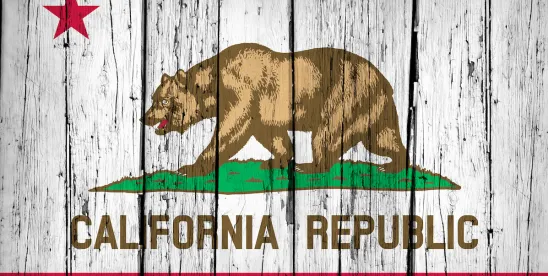The California Department of Toxic Substances Control (DTSC) has taken a step toward regulating microplastics. On June 20, 2025, DTSC proposed to add microplastics to its Candidate Chemical List (CCL) under the state’s Safer Consumer Products (SCP) program. While the addition of a substance to the CCL does not impose any immediate regulatory burdens, it is a predicate to potentially requiring product manufacturers to perform alternatives analyses or other regulatory actions, including market access restrictions. These additional regulatory measures have the potential to impact all businesses operating within the State of California that manufacture or distribute products containing plastic. The public has until August 4, 2025, to comment on the proposed rulemaking package.
Background
The SCP authorizes DTSC to identify and prioritize certain chemicals of concern and evaluate consumer products containing those chemicals of concern to limit exposure to, or reduce the hazards associated with, the use of these chemicals in consumer products. DTSC maintains a list of Candidate Chemicals comprised of those chemicals that, in DTSC’s view, both exhibit a property that may contribute to adverse effects on humans, animals, or ecological communities and appear on a statutorily specified set of authoritative chemical lists.
Additionally, DTSC may add a chemical to the CCL if the agency finds that this chemical exhibits a property that may contribute to adverse effects on humans, animals, or ecological communities and that the chemical satisfies a lengthy list of statutory factors relating to the chemical’s potential to adversely affect humans, animals, and the environment.
Once DTSC lists a chemical on the CCL, the SCP regulatory framework contains four key components:
- DTSC identifies a list of chemicals of concern from the broader list of candidate chemicals, which serve as the basis for selecting priority products.
- DTSC identifies and lists priority products that contain one or more candidate chemicals of concern via rulemaking.
- Responsible entities must notify DTSC if they produce, assemble, import, or sell a priority product; conduct an alternatives analysis (which requires evaluation and comparison of a priority product and one or more alternatives to determine whether a safer, feasible alternative exists); and submit an alternatives analysis report to DTSC.
- Based on the results of the alternatives analysis for the priority product, DTSC can impose a range of regulatory responses to address the hazard or potential exposure, including:
- Requiring additional product information for consumers;
- Imposing use restrictions on chemicals and products;
- Prohibiting the sale of a product or requiring engineering controls;
- Requiring end-of-life management; or
- Ordering funding for green chemistry research.
DTSC Proposal
DTSC’s Notice of Proposed Action states that “human and ecological exposure to microplastics is widespread” as the substance is “mobile in the environment, [and] found in virtually all ecosystems, as well as in drinking water, household dust and indoor air.” A DTSC press release announcing the proposed action states that microplastics are “pervasive, persistent, and increasingly linked to potential risks to human health, wildlife and the environment” and that the substance imposes “a growing economic burden” on California.
DTSC’s proposed rule defines microplastics as “plastics that are less than 5 millimeters (mm) in their longest dimension, inclusive of those materials that are intentionally manufactured at those dimensions or are generated by the fragmentation of larger plastics.” Both DTSC’s current effort to list microplastics as a Candidate Chemical and an earlier effort to designate microplastics a priority under the SCP have received sharp pushback from industry groups.
Next Steps
Businesses that manufacture or distribute products that contain plastic should:
- Consider submitting a comment concerning DTSC’s proposed rulemaking and
- Evaluate their operations to determine any additional regulatory burdens they may face should DTSC finalize its proposed rulemaking and designate Priority Products.
Maxwell Bradley contributed to this article





 />i
/>i
